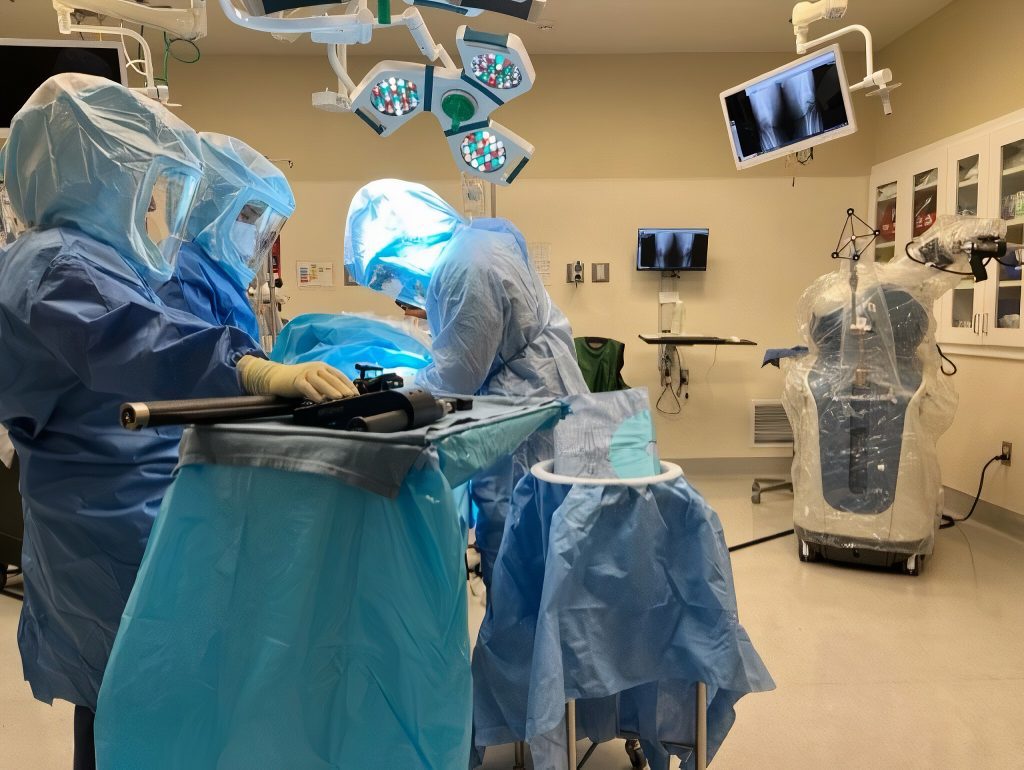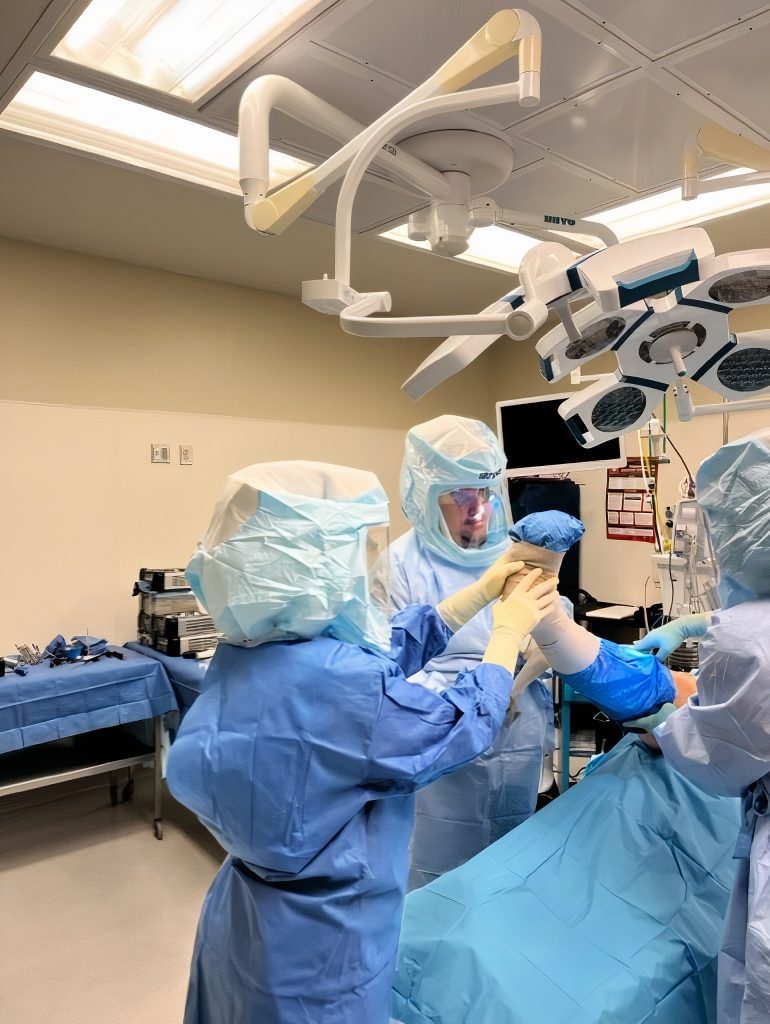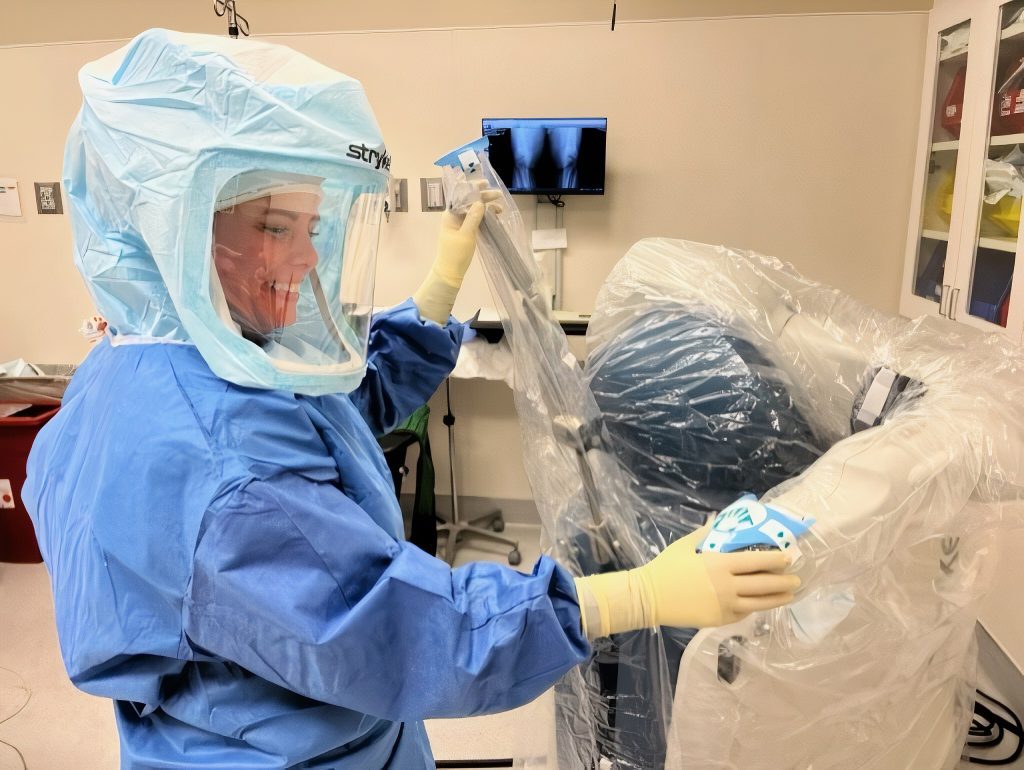These days AI is popping up everywhere. Self-driving cars rely on complicated algorithms, chatbots answer frequently asked questions via phone, and online programs attempt to mimic human speech and writing patterns. In the medical world, robot-assisted surgery began in the late 1980s with the arrival of Robodoc – yes, that’s really its name – but today’s advancements have become a vital tool for many surgeons. At OlyOrtho, they offer robotic-arm-assisted technology to provide joint replacement patients with the best surgical outcomes possible.

Robotic Assisted Surgery Is a 21st-century Tool for OlyOrtho Doctors
Dr. Milan Moore explains that: “The robot is simply a better tool to do what we’ve done before. When hanging a picture, you used to use a bubble leveler because that was the conventional way to get proper alignment. Now we have laser levelers that give totally straight, nearly perfect results. That’s what the robot gives us.”
The robot’s assistance helps give a replacement joint almost flawless orientation, sizing and balance. The exact same materials are implanted whether robots are used or not, it primarily impacts how the new joint is seated and adjusted.
For example, when doing a knee replacement to correct damage from trauma, age or disease, there is a loss of cushioning cartilage, which causes pain and impacts quality of life. Replacement resurfaces the joint and acts like a dental crown, so there’s no more bone-on-bone sensitivity. Waiting too long can cause your knee to bow or become lax, which causes poor balance and can reduce mobility. “We want to restore your knee to its original state,” says Moore.

Hand-in-Hand with Technology, Robotic-Arm Assists Surgeons in Olympia
Robotic-arm-assisted surgery is just that. The surgeon performs the procedure. There is never a time when the robot functions independently or performs any action on its own. Like advanced CT scanning, it’s a tool to allow minute variations and fine-tuning that a human doctor might not be able to see or feel.
In a knee replacement, the computer works to create scans and perfectly determine, for example, the site of ideal balance for positioning the joint. “It’s essentially 3D trigonometry, which is trivial for a computer,” says Moore. Using reflective markers during surgery means the built-in cameras can ‘see’ dimensionally and triangulate in space.
Staff plot roughly 100 points on the joint so the computer can map and model the knee in real space. “We collect enough points,” says Moore, “to plot everything within 1/2 millimeter or better. It’s very precise.” The robotic arm uses these when making cuts, giving results that he says are smooth as marble.
But, says OlyOrtho’s Dr. Trevor Barronian: “When it comes to the actual procedure, the robot is what we call semiactive, meaning it does not move on its own, it requires a surgeon to manually move the robot through all of the cuts. Thus, the surgeon is always in control of the robot, and it is not performing the surgery on its own. It also allows for an increased level of safety when performing the surgery.”

Enjoying Postoperative Success at OlyOrtho
“In my experience,” says Moore, “I feel robotic surgery patients have better initial balance after surgery. And in my clinical experience, recently, three-quarters of my two-week postoperative patients were walking without external support or needing prescription pain medication. Robots are the future and make very reproducible results.”
To use these systems, a vendor-trained employee is always on hand during surgery to advise and troubleshoot. Doctors must also pass the company’s unique course relating to that specific robotic system, there is no one-size-fits-all coursework. Many of today’s medical fellowships offer training and include education in robotics, but each brand is slightly different and calls for continuing education.
“Patients think this is like R2-D2 from Star Wars with the robot doing all the work,” says Moore. “But the machine just helps guide my hand.” Colleague Dr. Darrin Trask agrees. “My practice is probably 60 to 70% robotic. They provide a very accurate way to perform the surgery, consistent outcomes, consistent component placement and better soft tissue handling due to the ability to limit releases. This technology is very helpful in settings of significant bone loss, contracture, prior hardware and deformity.”
If you or someone you love lives with pain and limited mobility, reach out to the OlyOrtho team today and see if robotic-arm-assisted joint replacement would help. Book an appointment online or call 360.570.3460. Some patients may even be eligible for OlyOrtho’s outpatient joint replacement program. In the meantime, visit their library of educational videos and learn about the Total Joint Experience, and what to expect from start to finish. Look forward to a pain-free future and feel like a kid again, thanks to OlyOrtho.
Sponsored


































